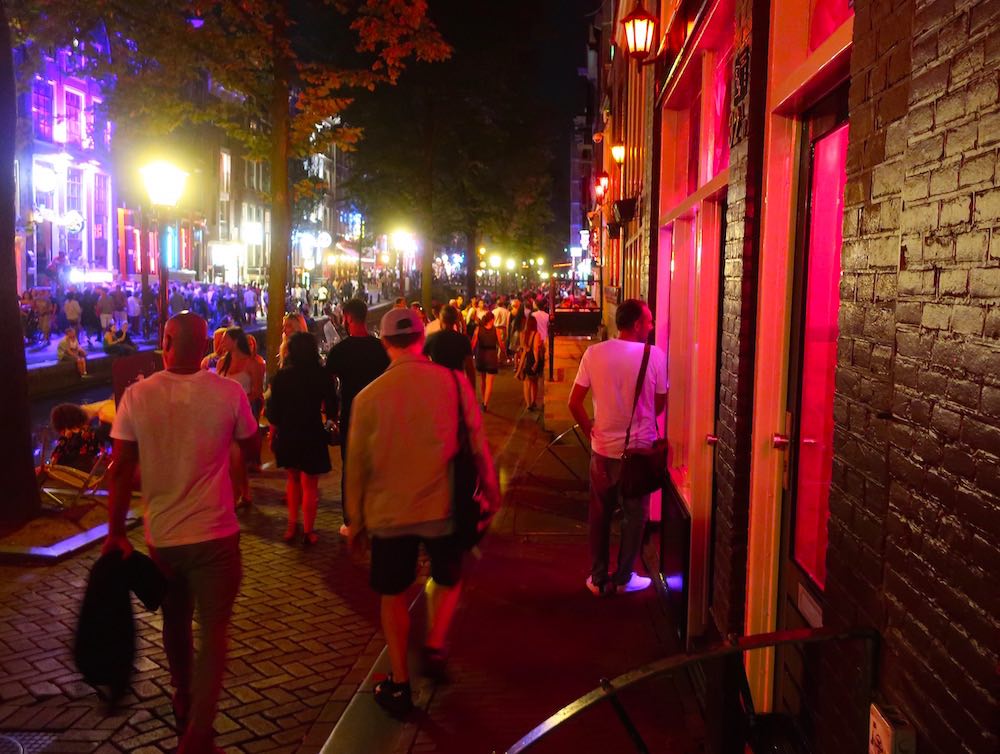Unlock the Secrets of the Red Street in Amsterdam: A 2024 Insider’s Guide
Posted on: oktober 1, 2024

Exploring Red Street in Amsterdam: All You Need to Know
Diving into the vibrant Red Street in Amsterdam reveals more than its neon glow. In 2024, this iconic district not only embodies Amsterdam’s liberal spirit but also stands at the forefront of significant cultural and legal transformations. Understanding its layers offers not just a visit, but an experience, enriching your travel narrative. Read on to explore the heart of Amsterdam’s most famous area, where history, regulation, and future prospects intertwine, promising a journey unlike any other.
Oudezijds Achterburgwal: The Heart of “Red Street”

Oudezijds Achterburgwal, often dubbed “Red Street,” is the pulsating heart of Amsterdam’s Red Light District. This historic canal, lined with age-old buildings that now house a variety of bars, coffee shops, and the famed red-lit windows, offers a direct glimpse into the district’s bustling nightlife and cultural depth. As you wander along Oudezijds Achterburgwal, you’re walking through a living history book, where every corner tells a story of Amsterdam’s past and present. Whether you’re exploring its hidden alleys, enjoying a drink at a cozy café, or simply soaking in the vibrant atmosphere, “Red Street” offers an unparalleled experience of Amsterdam’s legendary district.
Venues on red street in Amsterdam
On Oudezijds Achterburgwal, you find a diverse mix of venues that cater to various tastes and interests. Here’s a list of 10 notable spots located on this historic street:
- Excalibur Café – A heavy metal and hard rock themed café known for its unique decor, including knight and biker memorabilia. It’s a place where visitors can enjoy pool tables, televisions, and friendly service.
- Moulin Rouge – An iconic adult entertainment venue offering a variety of shows in the heart of the nightlife scene.
- Cafe Remember – A cozy café that features live sports on multiple big screens, a separate smoking area, and a small dance floor. It’s praised for its friendly staff and perfect coffee.
- Mata Hari – A restaurant located in a quieter part of Oudezijds Achterburgwal, offering food at pub prices in a living-room setting, just a short stroll from the more bustling parts of the Red Light District.
- Hash Marihuana & Hemp Museum – This museum is dedicated to cannabis, offering insights into its history and impact through exhibits and an audio tour available in multiple languages.
- Hotel Torenzicht – A hotel situated in the heart of Amsterdam, offering guests a variety of rooms with shared bathrooms, free WiFi, and an on-site restaurant serving local cuisine.
- Banana Bar – A well-known bar offering a unique and surprising experience in the center of the Red Light District.
- Theatre Casa Rosso – A famous strip club recognized by its pink elephant facade, offering entertainment in the Red Light District.
- Cannabis College – An educational center offering comprehensive information about marijuana, located on Oudezijds Achterburgwal.
- Hempstory – A boutique cafe near the Hash Marihuana & Hemp Museum, offering fair-trade hemp products and delicious coffee and hemp teas.
Historical Context and Evolution
The Red Light District, nestled in the heart of Amsterdam, is a testament to the city’s rich and often controversial history. Originally emerging as a district with a high concentration of brothels and bars as early as the 14th century, it has since evolved into a unique blend of historical charm and modern-day liberalism. This area, known for its iconic neon windows and vibrant nightlife, offers more than meets the eye. By understanding its evolution—from a sailors’ haven to a tourist hotspot—you gain insight into how Amsterdam has become a symbol of tolerance and openness. This transformation reflects the city’s ongoing dialogue with its past, making it a must-visit for those interested in the layers of history that contribute to Amsterdam’s unique character today.
Current Regulations and Legal Framework
In 2024, Amsterdam’s Red Light District operates under a well-defined legal framework that ensures the safety and rights of sekswerkers while maintaining the area’s appeal as a major tourist attraction. The Netherlands has been at the forefront of legalizing and regulating sex work, with policies focusing on health, safety, and preventing human trafficking. Recent regulations may include mandatory licensing for brothels, health and safety inspections, and initiatives aimed at reducing stigma and ensuring the economic rights of sex workers. As laws and policies continue to evolve, the emphasis remains on creating a safe and respectful environment for both workers and visitors. Understanding these regulations can enhance your visit, ensuring it is both enjoyable and respectful of the community that calls the Red Light District home.
Cultural & Social Aspects
The Red Light District is not just about its red light windows; it’s a melting pot of culture and social exchange. The area serves as a living classroom where visitors can immerse themselves in Amsterdam’s liberal values, learn about the sex work industry in a non-judgmental setting, and engage with the local culture through art galleries, cafes, and museums. Initiatives like guided tours aim to educate tourists about the realities of sex work and the district’s history, challenging stereotypes and fostering a deeper understanding of this unique community. This blend of education, entertainment, and enlightenment makes the Red Light District a fascinating study of Amsterdam’s social fabric. Take this Red Light District tour and become an Amsterdam connoisseur in record time.
Safety and Etiquette Tips for Visitors

Visiting the Red Light District requires mindfulness and respect towards those who work there and the local regulations. Here are some key tips to ensure a positive experience: always ask for consent before taking photos, as photographing sex workers is prohibited; avoid loud and disrespectful behavior; stay aware of your surroundings and belongings; and respect the rules set by businesses and local authorities. Remember, the Red Light District is a professional working area as much as it is a tourist attraction. By following these guidelines, you contribute to a respectful atmosphere that honors the dignity of all individuals. Do not forget to read these Amsterdam Red Light District rules for tourists summarised by our local experts.
Future Outlook & Developments
The Red Light District stands at a crossroads between tradition and transformation. As Amsterdam faces challenges related to tourism, urban planning, and the rights of sex workers, the future of this iconic area is a subject of lively debate. Plans for redevelopment, efforts to combat overtourism, and initiatives aimed at further empowering sekswerkers are part of the ongoing discussion about what the Red Light District will look like in the years to come. Staying informed about these developments not only enriches your visit but also connects you to the broader conversations shaping the future of Amsterdam.
Veel Gestelde Vragen
Where are most red-lit windows in Amsterdam Red Light District?

The most concentration of red-lit windows in Amsterdam’s Red Light District can be found around Oudezijds Achterburgwal, Oudekennissteeg, and Stoofsteeg. These areas are known for their historical and cultural significance, offering visitors a glimpse into Amsterdam’s unique approach to the legality and regulation of the sex work industry. The Red Light District, with its distinctive red-lit windows, showcases a longstanding tradition within the city, attracting tourists from around the world due to its openness and regulated environment.
Where is the narrow alley?

Trompettersteeg is a very narrow alley located in the heart of Amsterdam’s Red Light District. It can be found next to the Oudezijds Voorburgwal and close to the Oudekerksplein, near the bustling area of the city known for its historic buildings, unique shops, and the famous red-lit windows. Trompettersteeg is particularly notable for being one of the narrowest streets in Amsterdam, making it a point of interest for visitors exploring the city’s intricate network of alleyways and canals. Use this Amsterdam Red Light District map to get to the Trompettersteeg.




I always love your emails.It is always fascinating to read and learn more about Amsterdam s iconic Red Light District